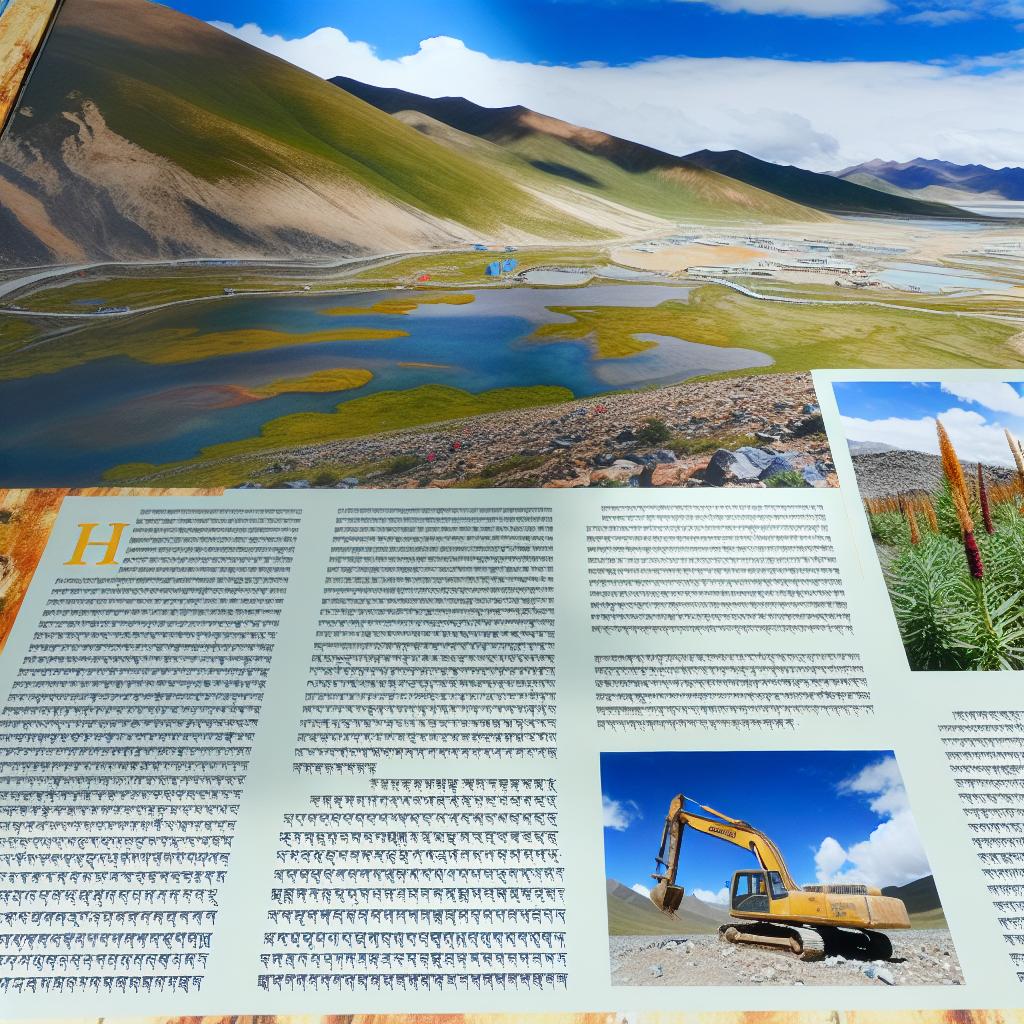The Backdrop of Resource Exploitation in Tibet
The Tibetan Plateau, commonly known as the “Roof of the World,” stands out not just for its breathtaking landscapes but also for its abundance of natural resources. These resources have increasingly attracted attention, particularly from neighboring China. China’s interest is driven by the need to fuel its rapidly expanding economy, and Tibet, located in the western part of China, emerges as a vital cog in this endeavor. The region is endowed with significant mineral, freshwater, and forest resources, all playing critical roles in sustaining China’s growth trajectory.
Mineral Resources in Tibet
Home to a myriad of mineral deposits, Tibet houses copper, gold, and lithium — all of which are highly sought after by industries globally. The exploitation of these minerals by Chinese enterprises has become increasingly systematic and extensive, significantly contributing to various industrial sectors. Copper, for instance, is indispensable in manufacturing electrical equipment due to its excellent conductivity and durability. Meanwhile, lithium’s importance has exponentially increased because of its pivotal role in producing energy-dense batteries for electric vehicles, a sector experiencing rapid growth. Yet, the extraction of these minerals brings with it considerable environmental and social hurdles, requiring judicious management.
Environmental Concerns
The process of extracting these minerals inevitably results in environmental disturbances that are often detrimental. Mining activities frequently lead to deforestation, potentially stripping entire areas of their natural vegetative cover and causing prolonged ecological imbalances. Soil erosion is another consequence, as the removal of vegetation destabilizes the soil, making it more susceptible to being carried away by wind or water. A more severe environmental threat stems from water contamination, where mining processes introduce harmful substances into water bodies. Given that the Tibetan Plateau is the source of many major rivers, these activities can have detrimental effects on river ecosystems, ultimately endangering the communities relying on these essential water sources.
Water Resources
Touted as the “Third Pole” owing to its vast ice fields, the Tibetan Plateau serves as the starting point for several of Asia’s significant rivers. These include iconic rivers such as the Yangtze, Yellow, and Mekong Rivers. The strategic significance of these water resources has motivated substantial Chinese investment in hydroelectric projects. Hydropower, while inherently a clean and renewable source of energy, brings its own set of environmental challenges. The construction of massive dams, pivotal for harnessing hydroelectric power, can cause substantial disruptions to local ecosystems, affecting aquatic biodiversity and river dynamics. Moreover, the development of dam infrastructure frequently necessitates the relocation of local populations, thus altering livelihoods and social structures.
Societal Impacts
The extensive exploitation of Tibet’s natural resources has generated noticeable shifts in the societal fabric of the region. An influx of workers from other parts of China has led to demographic changes, occasionally causing tensions between indigenous Tibetans and the newly settled migrant population. Development policies adopted by the Chinese government sometimes place paramount importance on resource extraction, potentially sidelining the traditional practices and lifestyles of the Tibetan people. These demographic alterations and policy decisions can result in social, cultural, and economic stress within local communities. Balancing development objectives with the preservation of traditional ways of life becomes critical in maintaining societal harmony.
Policy and Development Considerations
The Chinese government has consistently articulated that resource development in Tibet aligns with broader national objectives aimed at enhancing local infrastructure and improving living conditions. Despite these assertions, various environmental advocacy groups and human rights organizations have raised concerns about the methodologies and the pace at which development is transpiring in the region. Critics argue that the aggressive pursuit of economic growth often marginalizes ecological sustainability and cultural preservation, igniting debates around the optimal balance between deriving economic benefits and maintaining Tibet’s rich cultural heritage and pristine environments.
Balancing Economic Growth and Cultural Preservation
The paramount challenge remains to balance economic growth initiatives with the preservation of Tibet’s unique cultural and environmental tapestry. Achieving this balance mandates implementing a nuanced, multi-faceted approach that incorporates the rights and input of local communities, prioritizes the safeguarding of ecological systems, and ensures the sustainable utilization of resources. Adaption of modern sustainable practices that respect both human and environmental elements could serve as a model globally.
The path forward for Tibet lies in how these resource management challenges are navigated. Collaboration among governments, businesses, and local communities is essential to guaranteeing that developmental progress is achieved equitably and sustainably. Continued dialogue and negotiated agreements can help align interests in a manner that promotes long-term stability and prosperity for the Tibetan Plateau and its diverse inhabitants.
A more profound exploration of sustainable development practices aimed at Tibetan areas could yield valuable insights and strategic frameworks. This can be pursued through dedicated resources and reports, offering a deeper understanding of how such practices can be implemented effectively and equitably.




